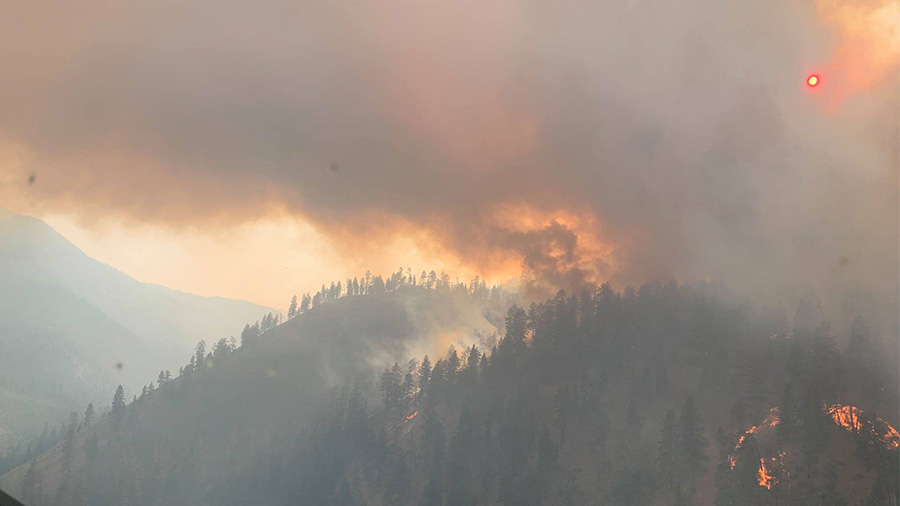Forest fire continues to grow as smoke hampering air resources
Published at
SALMON — A fire has continued to grow in the Salmon-Challis National Forest as heavy smoke in the west makes it difficult to fight from the air.
The Mud Lick fire had burned 4,046 acres as of Monday morning with 315 firefighters and other personnel battling the blaze, according to a Salmon-Challis National Forest news release. The fire likely broke out Thursday after a lightning strike approximately 24 miles west of Salmon.
The fire is 0% contained and crews are focusing on suppressing the fire near private property in the Panther Creek drainage and near mining infrastructure.
“Heavy smoke from this and other large fires in the west is hampering the ability of air resources to engage in fire suppression actions,” officials said in a news release. “Fuels in the area are critically dry and weather conditions through the week will remain hot and dry.”
Temperatures this week are expected to sit around 90 degrees with humidity in the teens, only making wood and other fuels dryer. The fire has the potential to grow large with predicted high winds of 20 mph or greater.
Officials say the fire has burned in steep terrain with limited access for firefighters.
The Forest Service asks people to avoid the area of the fire so crews can focus on working to contain the blaze.
Additionally, emergency trail closures were issued Monday to the Lock Creek, Birch Creek, Gany Ridge, Indian Creek and Big Deer trails.
“Forest officials are asking the public to be extremely careful when recreating on the Forest and to remember that it’s your job and responsibility to properly maintain and extinguish all campfires,” a news release reads. “The 2021 fire season has begun with unseasonably high temperatures and low fuel moistures, so it’s especially imperative this year for the public to be judicious with campfires. We can all make a difference in reducing human-caused fires during this season. Remember, one less spark means one less wildfire.”


